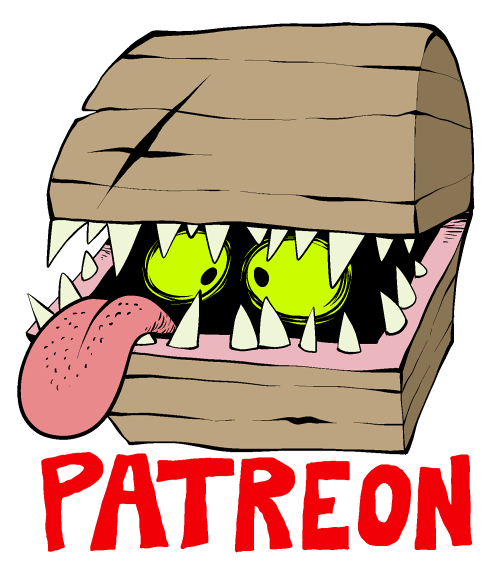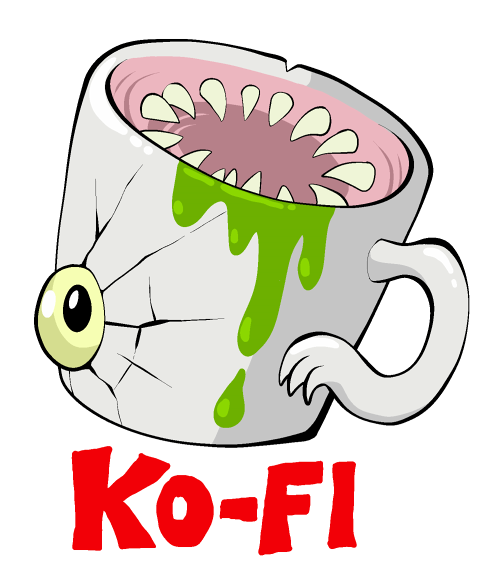
By Jonathan Wojcik
ENTRY 24: TERRIFIED

Today's entry is an Argentine horror film by writer and director Demian Rugna, released in Mexico in 2017 and on the streaming service Shudder by 2018. Focusing on the strange phenomena surrounding the homes on a single suburban street in Buenos Aires, it feels interestingly half-way towards an "anthology" film, in that it essentially shows us several different horror scenarios that happen to share a setting, certain characters, and finally merge together for its climax.
It is also
interpretable as a movie about ghosts or hauntings, but it never actually follows the rules of such, and by the end we've been given a
pretty wacky explanation for everything, as you'll see...

We begin with a couple, Juan (Agustin Rittano) and Clara (Natalia Senorales). While washing dishes, Clara thinks she hears a whispering and chattering from the sink drain. The few intelligible words have something to do with Clara herself and something to do with killing, but when Juan comes to investigate, of course, he can't hear anything.
That night, Clara is taking a shower while Juan tries to tuck into bed, but he's kept awake by a repetitive slamming sound. He assumes it's his neighbor, Walter (Demian Salomon) hammering something at odd hours of the night, but Walter doesn't respond to his shouts, and when Juan finally goes next door to confront Walter, he realizes he can still hear the thumping from his
own unit, and our next scene is remarkably shocking...

A clearly deceased Clara is hanging in the bathroom, but not by a rope. Hovering in the air, her stiff and lifeless corpse is slamming from one wall to the other, hard enough that the bathroom is sprayed with blood. As baffled as he is horrified, Juan even pleads with
Clara to stop what she's doing, unable to logically process that she can't possibly be in control. The invisible force is strong enough that Juan with all his might can't stop the body as it just keeps hovering, keeps slamming back and forth, splashing blood with every impact until he can do nothing but collapse, weeping.

We next see Juan in prison, having been the only logical culprit in Clara's brutal death. He is however being interviewed by three people who evidently believe his story, for reasons we do not yet know. These are a coroner named Jano (Norberto Gonzalo), Doctor Mora Albreck (Elvira Onetto) and professor Rosentock (George L. Lewis).

Next, we meet Juan's neighbor Walter ourselves, dealing with problems of his own: every time he tries to sleep, objects around his room shudder, slide around and rearrange themselves, especially when he's not directly looking at them, though even his bed scoots across the floor at one point with him in it. These occurences have of course left him an exhausted, nervous wreck, interfering with his job as he tries in vain to convince his therapist that he's experiencing something genuinely unexplainable.
We're treated to the sight of Walter's invisible roommate before he ever sees it for himself; a tall, lanky, nude and hairless figure we first see curled up under his bed, though it isn't there when
he checks. He eventually decides to set up night-vision security cameras around his room, but it's a decision he quickly regrets:

Would you honestly ever try to sleep again in the same room? Or would you immediately show the footage to anyone you possibly could and sooner sleep literally anywhere but home, ever again?
In contrast to Juan's harrowing experience, there's a streak of humor in Walter's ordeal; the interplay between this very, very tired man and the naked ghoul's technically harmless but annoying activities are timed almost like a comedy routine, at least until Walter gets himself a handgun and thinks the being is cornered in an armoire.

Walter finds nothing at all when he opens the doors, but the being reappears once his back is turned, and we cut away before we find out what exactly it does to him.

In the third, perhaps darkest incident, an unnamed little boy (Matias Rascovschi) chases a ball up to Walter's apartment, and we hear Walter's voice not only screaming at him to get away, but to not drink any water. Kind of an odd thing to say in a panic...was it even
really Walter?
...The perplexed child backs away, but backs away until he's standing the middle of the street. He is hit full-on by a speeding bus, and he dies instantly.
...But only days later, Jano the coroner and police commissioner Funes (Maximiliano Ghione) are called to the boy's house. The grieving mother, Alicia (Julieta Vallina) is elated that her son has apparently come right back, which especially disturbed Funes, who also happens to be her ex-boyfriend.
What the two men find is one of the most unsettling "reanimated" corpses I believe I've ever seen in a film. Kind of.

The boy is
not a zombie. He is not "undead." He is
dead dead, an inanimate corpse seated at the dinner table. The assumption of course is that Alicia must have stolen the body, but it's already been a while since the funeral. It doesn't make any sense that she could have dug up an entire grave and opened up the casket all on her own, and without anyone at any point noticing.
There's also the fact that the body is caked with soil, including under its fingernails, showing every sign of someone who dug out of the Earth on their own. Not to mention, there are lots of little, muddy foot and hand prints outside.

...
All over the outside of the house.
When one of the boy's friends comes by to retrieve a toy, we finally see only one example of movement from the corpse; its head slowly, laboriously turning to look out the door at the other child.
You
still don't get an impression of a "living corpse" from this moment. It's too stiff. Even with the evidence that he tunneled out of his grave, scurried home and climbed around the building like an insect before getting seated for breakfast, it really feels like this is
just a completely dead carcass with no manner of consciousness; something truly being moved around by "something else."

This is when Jano the coroner, doctor Mora, and Mora's scientific colleague Rosentock gather together, all three having fancied themselves "paranormal investigators" and having allegedly studying similar incidents for many years. Positively
thrilled by this concentration of morbid and impossible events, the eccentric monster hunters enlist the assistance of Funes as they intend to study the extranormal forces in all three apartments simultaneously, and at last document tangible proof of some "hypothesis" they've long been working on.

This final stretch of the film is (in my opinion)
highly entertaining for both its tense dread and darkly humorous undertones. Maximiliano Ghione brings SO much character to the haggard and haunted commissioner Funes, a character with nerves so visibly shot that it doesn't come as any surprise when his heart starts acting up on him, and the three kooky researchers do
not help, to say the least. He needs to keep up with their findings to perform his job as a detective, especially with his ex girlfriend involved, but the battle between his blood pressure and the suicidal, maniacal enthusiasm of the wannabe ghostbusters is almost worse than the battle with the supernatural.

The first strange observation is made by Rosentock, in Walter's apartment. He finds the silverware dangling from the underside of the kitchen cupboards, drawn to something magnetic that must be hiding inside. While he shows this off to Funes, a knife suddenly impales his hand, pinning it to the wood, and even through this pain the man is fascinated to hear a soft, straw-like slurping sound as the blood runs
up the knife.
Funes trains his gun on the cupboard as Rosentock prepares to open its door, but the moment he does so, the utencils shift position as the magnetic entity flees, and they clatter to the ground as it evidently escapes the cupboard unseen.

Funes retreats to another room to calm down, and has a phone call with Jano, who is currently studying the home of Alicia and her deceased son. Funes immediately regrets this call when Jano peers out the window at Walter's home and asks who the tall, unfamiliar figure is in the window; the same room Funes is calling from. Jano cannot see this figure, however, when he leans just a little to the right to look out an adjacent window panel.
As he sways back and forth, testing the illusion, the figure is quite suddenly staring him in the face.

Later, Rosentock discovers the familiar entity hiding once again under Walter's bed, and is all too excited for Funes to come and see it. Rosentock shows Funes that the figure can only be seen in darkness and only from certain angles, imploring Funes to peek under the right side of the bed and see for himself. The ensuing jump scare sends Funes running out into the street, gasping for breath, until he can call Doctor Mora and update her on the situation. She tells him to check up on Jano, but not to trust anything he thinks he sees.

At first unable to find the man, the detective follows strange gibberish he seems to be picking up through his hearing aid rather than his actual surroundings, and finds a lot of racket coming from a large wooden display cabinet. There is nothing at all inside it, but when he continues to hear muffled cries, he breaks open the
back to find what seems to be a blooded Jano, screaming from within a dark space that shouldn't physically exist.
Funes runs to retrieve Doctor Mora, who is studying a large crevice she has found in the wall of Juan and Clara's home. She does not seem alarmed by his claims or willing to take him seriously enough to tear herself away from her precious observations, only lecturing Funes on the details of the hypothesis she and her colleagues have been piecing together...

...When suddenly, a long and alien-looking arm bursts from the crevice, grabs Mora by the hair and starts slamming her into the wall. Funes starts grappling with a heart attack on the spot, collapsing to the floor, and as the camera angle shifts we can already see no trace of Mora at all; only a ghoulish figure dragging its way toward Funes, a bit too blurred to make out but with that same elongated, spindly-fingered arm.
We can no longer see the creature by the time Funes begins to recover, but he looks up just in time to see multiple chairs and tables sliding towards the wall-crevice. He is found still gasping and dragging himself on the floor by Alicia, who confronts him bitterly on having "taken away" her "baby." He and Jano had not only returned the dead boy's body to its grave, but covered it over with cement to prevent it returning again.

Funes tries to talk sense into Alicia, and she finally asks him to leave with her, but when they get to her car...there is something very familiar seated in the back seat.
Alicia pleads with him to understand, but Funes can only stagger in a horrified daze to his own car. As he gets behind the wheel, Mora comes running out of the apartment...

...With her head twisted backwards, dangling upside-down. There is no way she can possibly be alive this way, if it is indeed her and not another "trick," but her contorted form is screaming that they are all "being tortured" as Funes very understandably steps on the gas and speeds away.
He stops at a nearby park, and gets a call from one of his fellow police who have come looking for him. The officer says he can see Jano standing outside the apartments, "acting weird," and Funes must beg for the man to get out of there and get someplace safe. He calms himself down with a cigarette after the call, staring at a bloody handprint Mora (or the Mora-thing) left on his window, and he seems to be overcome with sudden determination.
He drives back and re-enters the apartments, with tanks of gasoline in hand. He finds that Alicia has gone back into her home only to hang herself, and briefly sees the child body standing stiffly through the gap in a door. Fighting through his grief, he continues to douse the home with gas and goes outside to light a match...but the flame blows out immediately.
He lights another and another, but they just keep going out again.
He lights one more, and this time, instantly, he can see Jano blowing out the match mere inches from his face.

Jano turns to stare at Funes with bulging, translucent red eyes, multiple tiny lights glowing within them. Funes stumbled backward, but uses his pistol to ignite the gas and burn down the home as the weird, bug-eyed Jano watches nonchalantly.

In our final scene, a new set of investigators are interviewing Juan, who by now is the only survivor of any unexplained incident on his street, barring detective Funes who apparently went missing after his acts of arson. They show Juan photographs of everyone involved, including the missing investigators, and Juan puzzles a bit over the photograph of Rosentock.
If all these people are supposed to be dead or missing...Juan wonders why this man is right there, seated behind them.
As the investigators turn to look at an empty chair, it abruptly flies through the air and into the camera as the film ends.
MONSTER ANALYSIS: ...The What Now??

Maybe you can see what I mean about this playing out like a "ghost story," but
not a ghost story. We have a corpse returning from its grave, invisible beings manipulating objects and ghastly figures that can only sometimes be seen...but it seems less like they're intangible or "spectral" entities and much more like physical beings perceptible only under the right circumstances. They can seemingly take human bodies for themselves and distort them into stranger shapes, they're evidently magnetic, they defy the known laws of three dimensional space, and whenever they're near, the camera has a tendency to focus on sources of water.
I mentioned that the elderly ghostbusters have their own theories, and I held off on spoiling those until now: never mentioning spirits, demons or the dead, the three are obsessed with the concept of alternate universes or unseen dimensions "intertwined" or "superimposed" on our own, Rosentock raving about "darkness and light" as an example of how the same space can be perceived in two different states, and Jano mentioning something about electricity passing between states of existence through conductive mediums. Eventually, Mora explains that they believe in an alternate physical reality occupied by "other beings." She doesn't explain in detail what they are, exactly, but goes on to talk about how water is a natural medium through which "microscopic life forms" can collect, reproduce, and travel. She says that "they" can use our bodies, that they like blood, and she does not know what triggers them to violence, which is around when she's pulled into a wall to her death.

There would surely be much more to their theory than what little they conveyed to Funes (and the viewers), but if we take them at their word and compare their claims to the events of the film, it would seem that our reality is overlaid with one dominated by a microbial, electromagnetic intelligence capable of crossing between these two states through water, including the water in a human body.
Maybe the three are just totally out of their gourds, but it certainly makes no less sense than the existence of magic, curses or poltergeists ever would have. Accepting this all as canon until further notice (and I'm happy to report that a sequel sounds underway) we're left wondering precisely what rules dictate the behavior of possessed bodies. Their visibility and even tangibility somehow varies by not only light level, but by the direction from which they're observed, and the nature of physical space seems to vary in kind, as if a body fully taken as a vessel begins to exist in a sort of limbo state between realities, and our ability to perceive or interact with them is distorted by spatial limitations beyond our grasp.

This is another of those classic sci-fi concepts I love trying to parse out in my head; if "their space" and "our space" are "shaped" differently, it makes sense that they seem to blink in and out of existence almost arbitrarily from our perspective. Imagine being followed by a creature through a labyrinth of completely invisible walls, for example. Now imagine you can walk through those invisible walls - that they simply don't exist for you at all. But
now imagine that, despite the walls being invisible, you can't see the creature through them; you can only see it when there's no invisible wall between the two of you. This would explain why, for instance, the long-armed creature disappears as soon as Funes simply lifts his head: there's something, somehow, "breaking his line of sight" from that position, albeit something that exists only in that other world.
Terrified is a horror movie with a wonderfully fun atmosphere. Even if it
were only a ghost story, it would be an exceptionally creative one that subverts all the most tiresome tropes and delivers a kind of creepiness that feels simultaneously classic and fresh, all tied together with
great character acting. It's just a wonderful bonus that this spooky tale not only invents its own rules for a "haunting," but offers a brand new, totally bonkers explanation that
actually makes cohesive sense of those rules.
NAVIGATION:
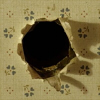
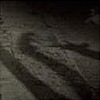
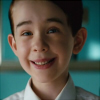
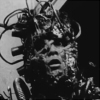
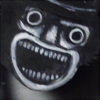

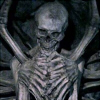
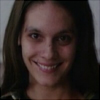
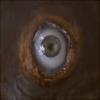

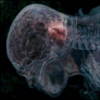
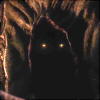
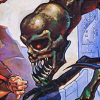
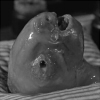
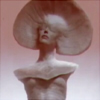
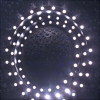

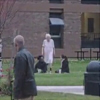
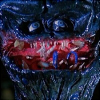
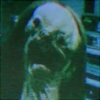
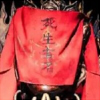
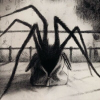
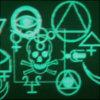
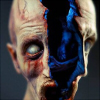
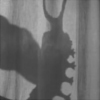
WAYS YOU CAN SUPPORT THIS SITE!

